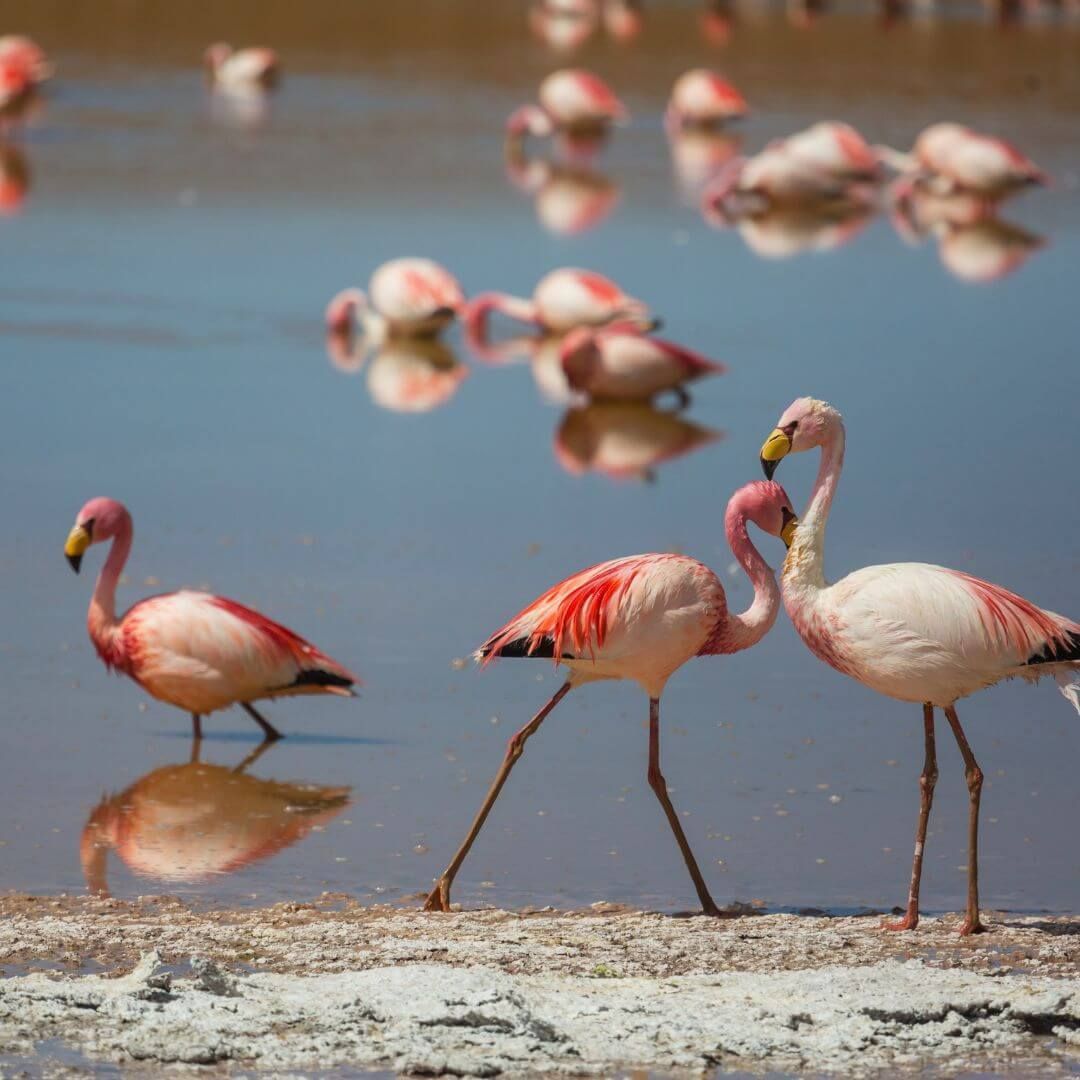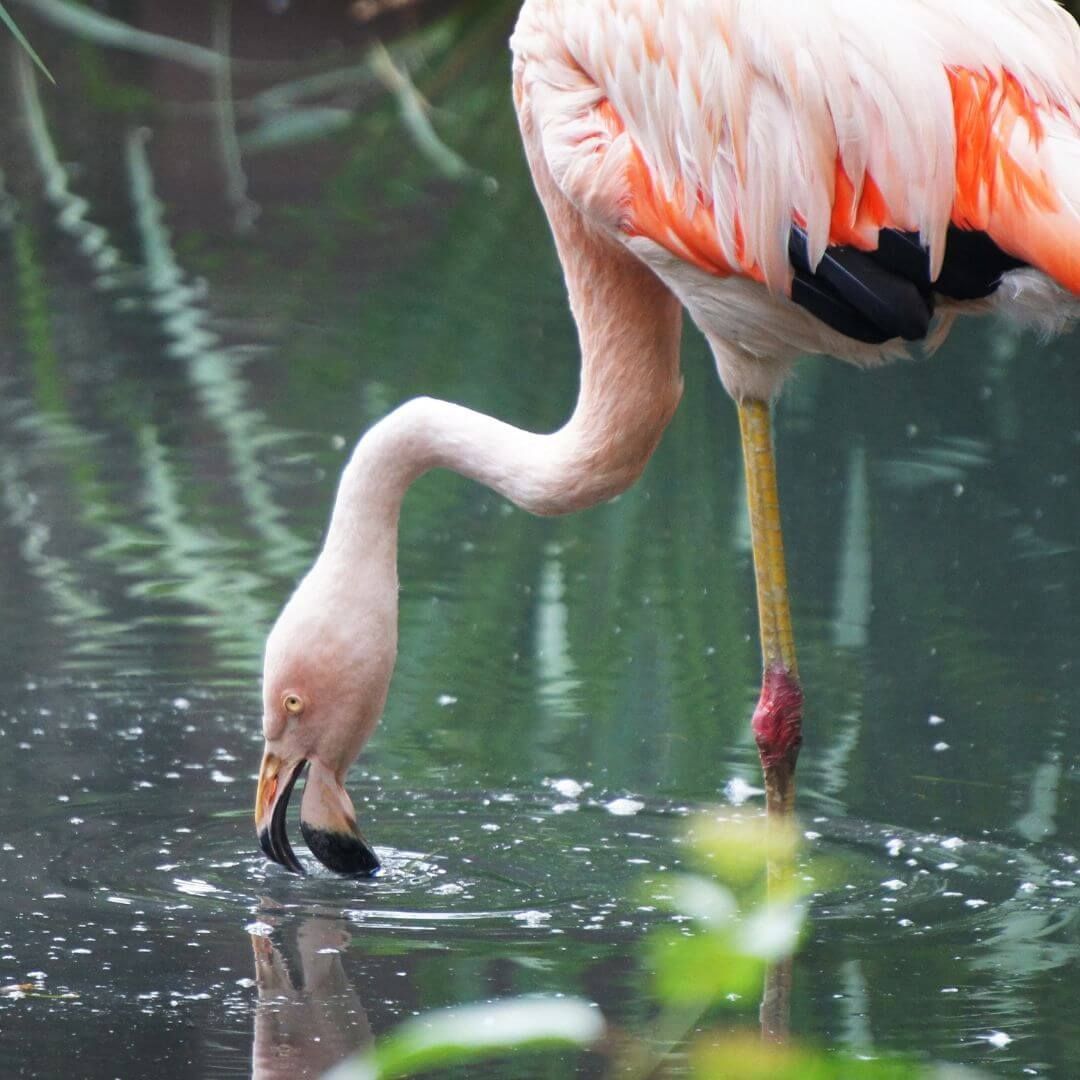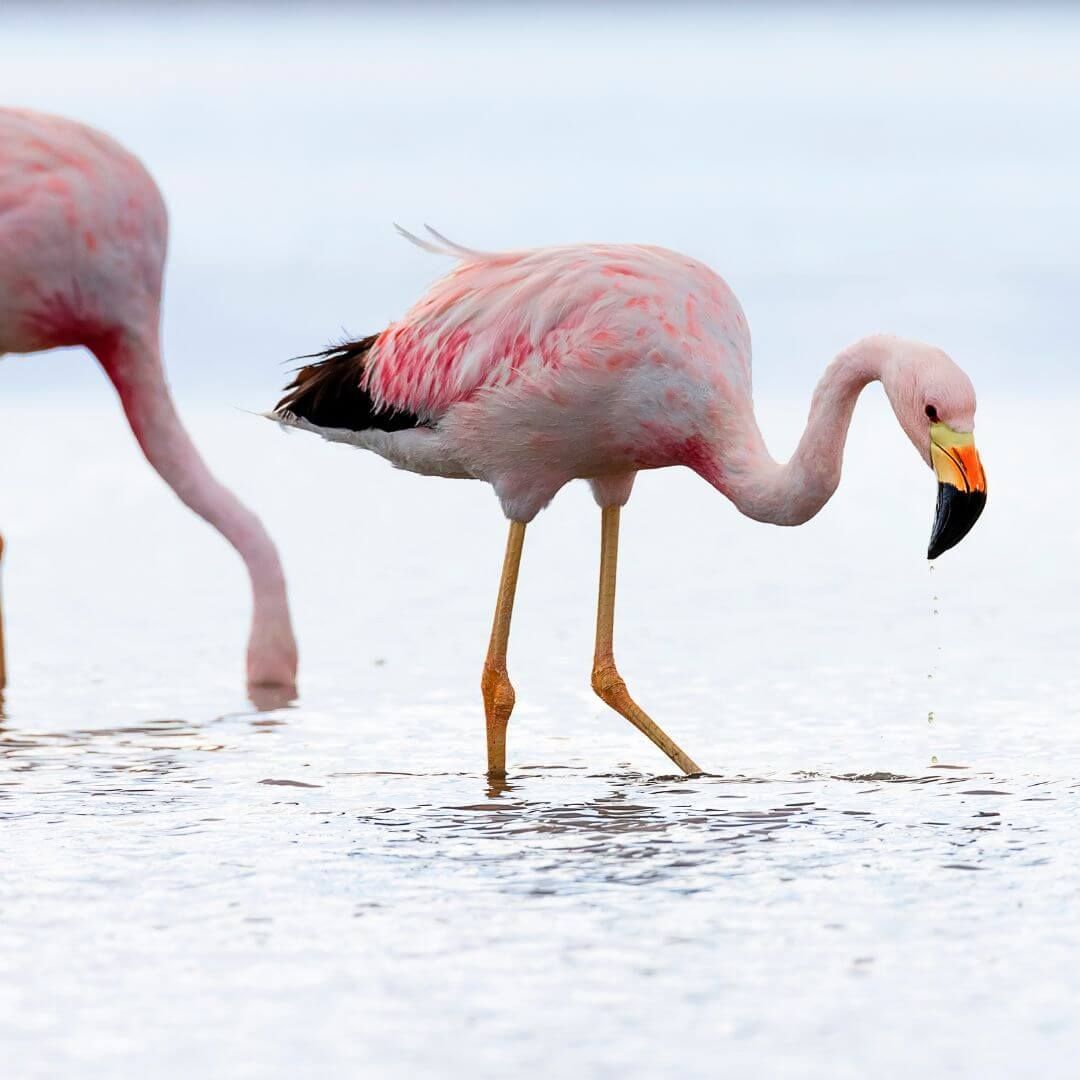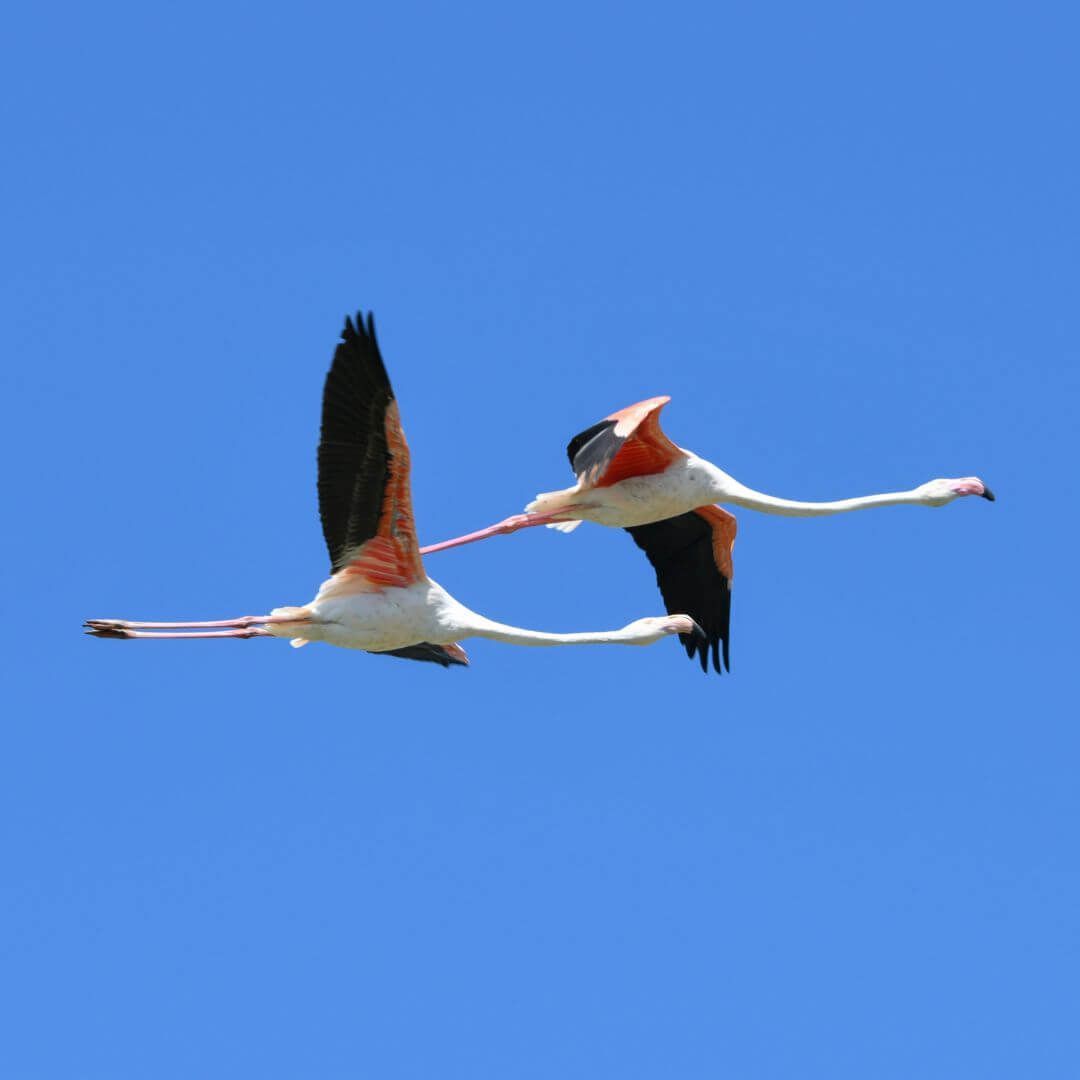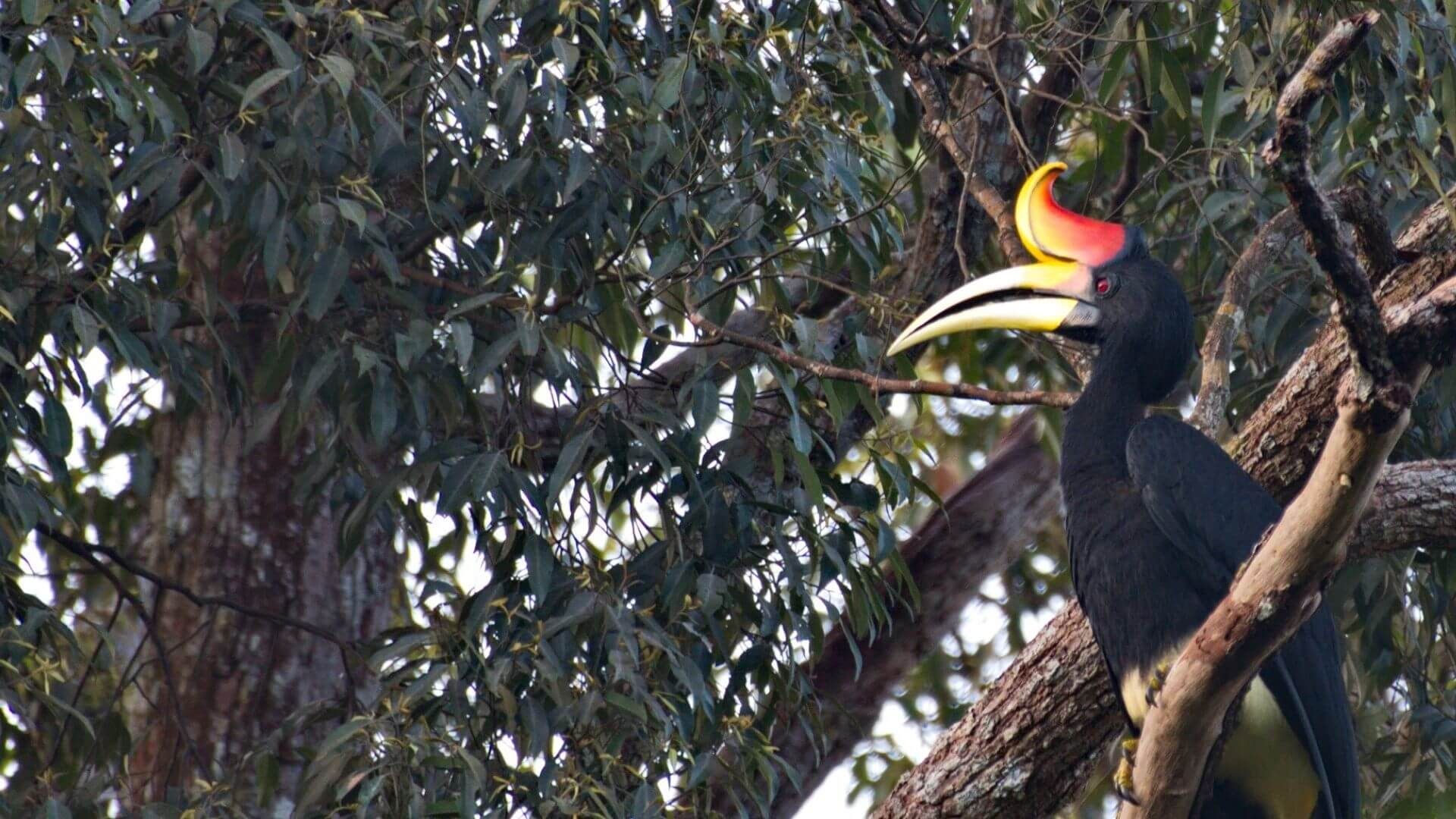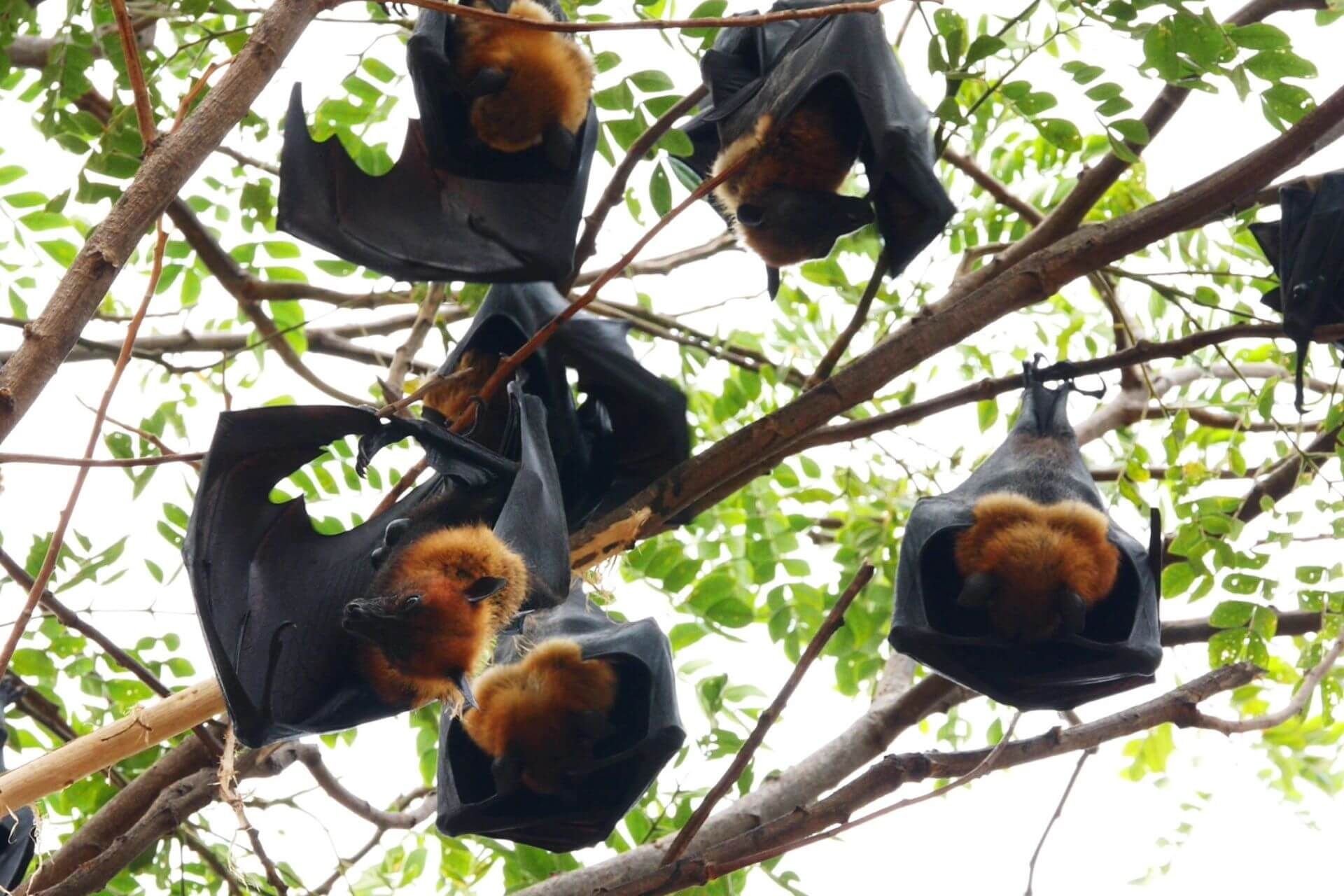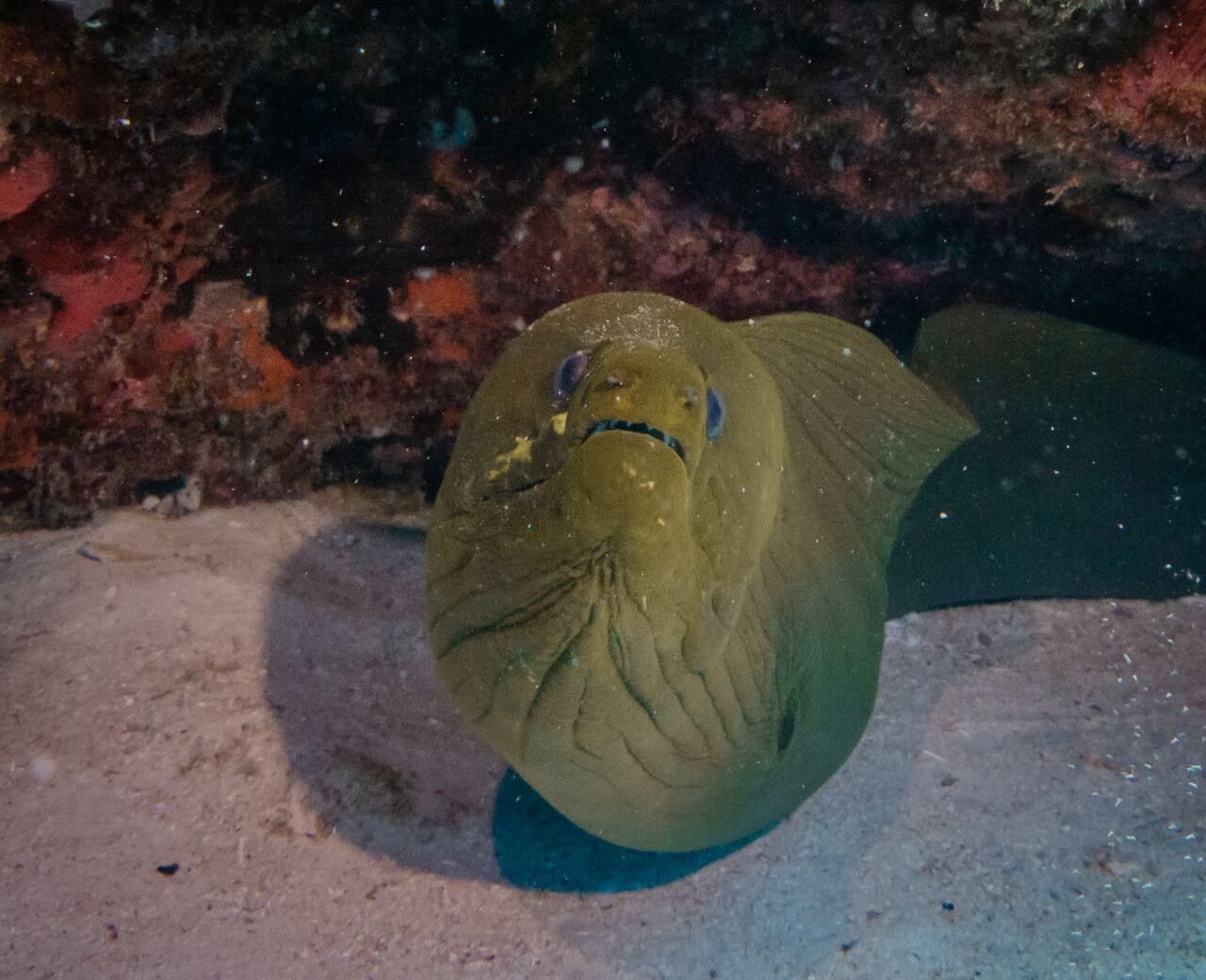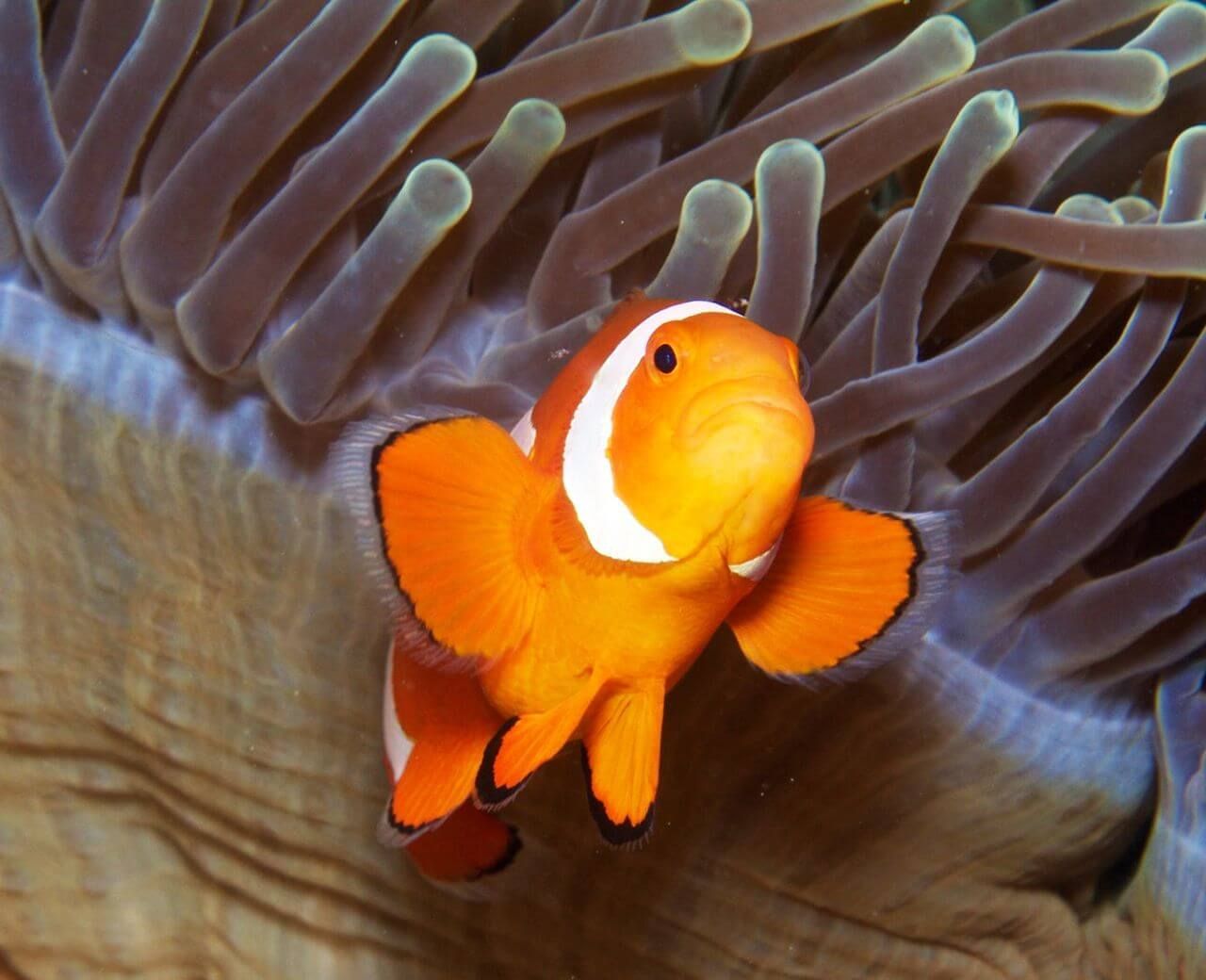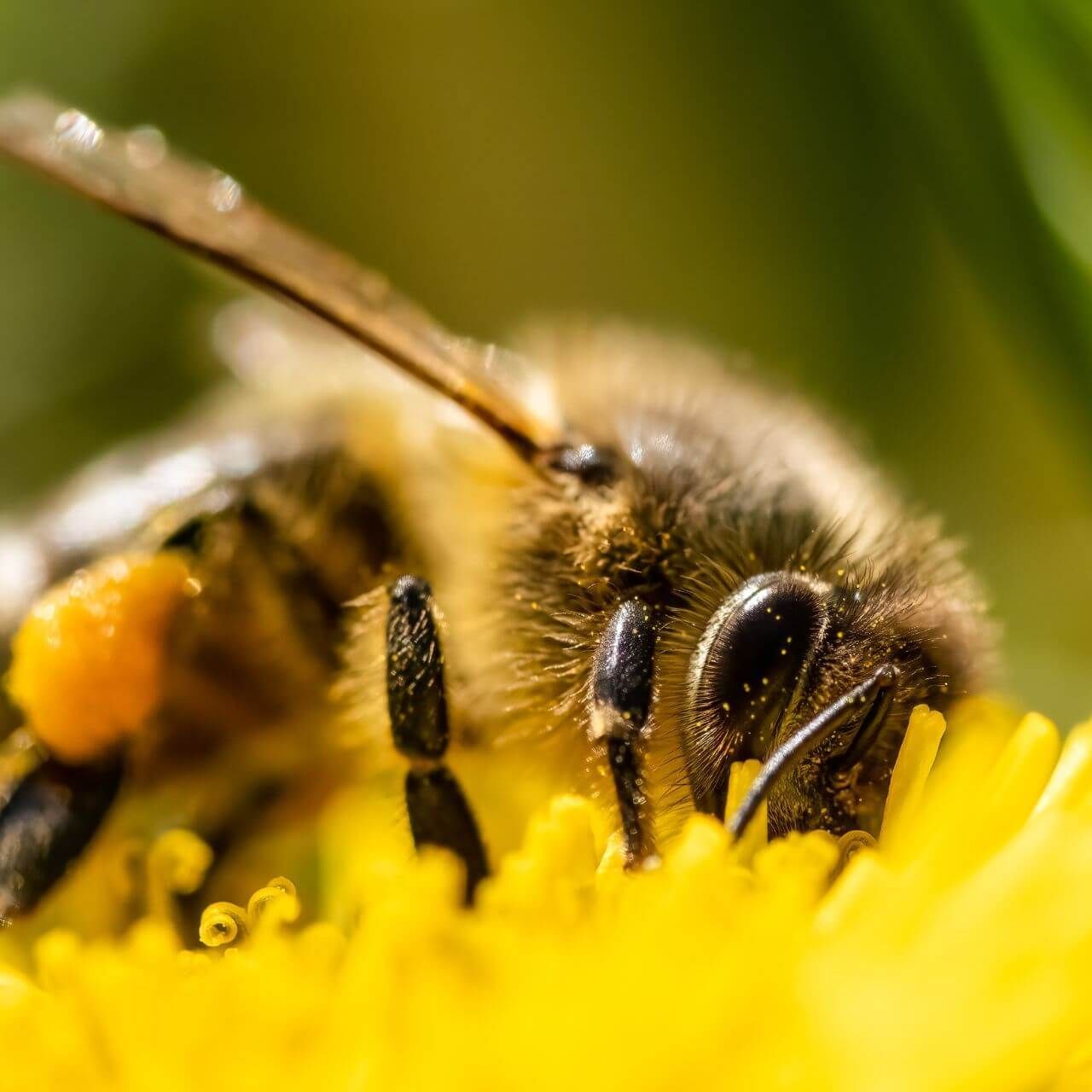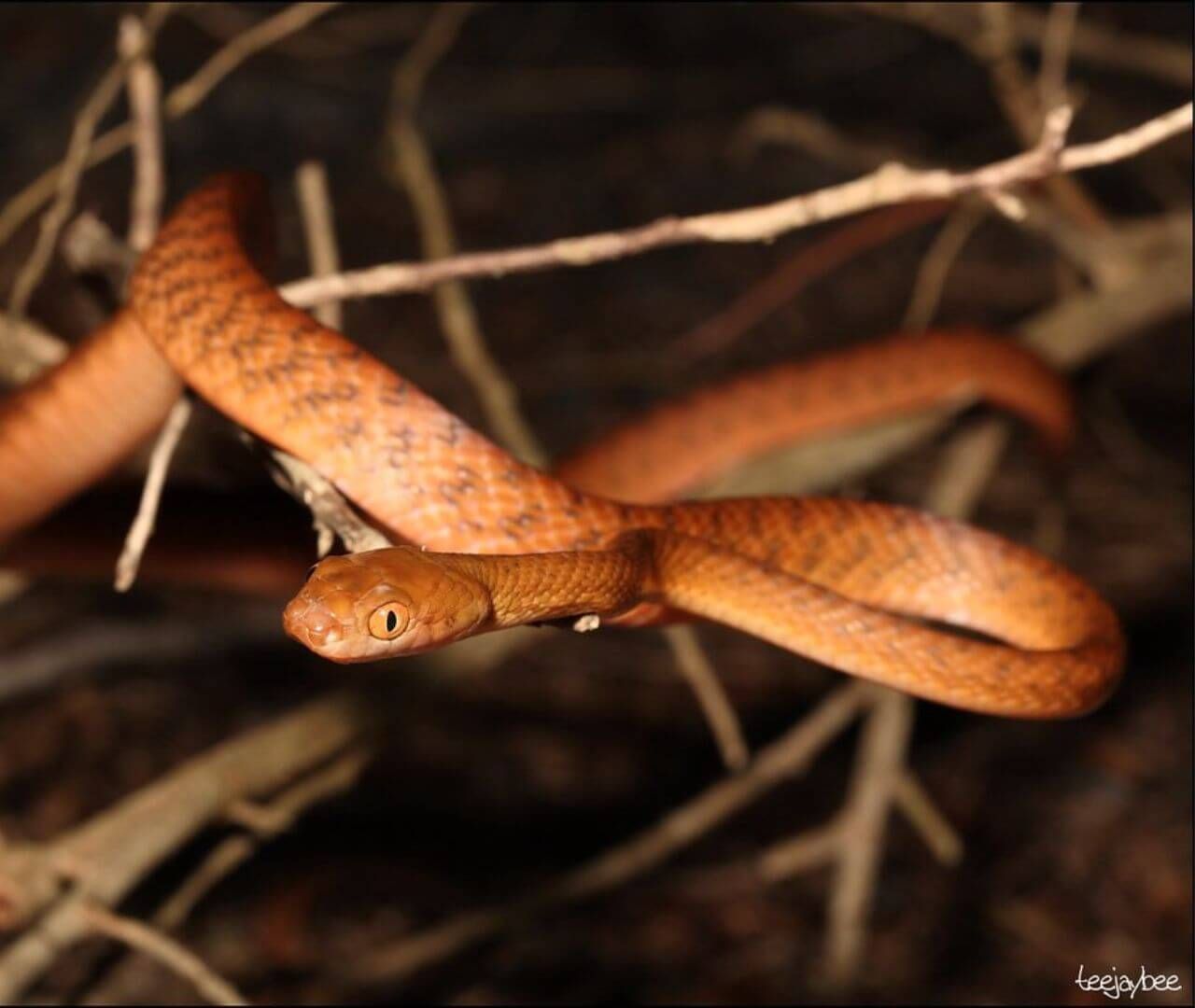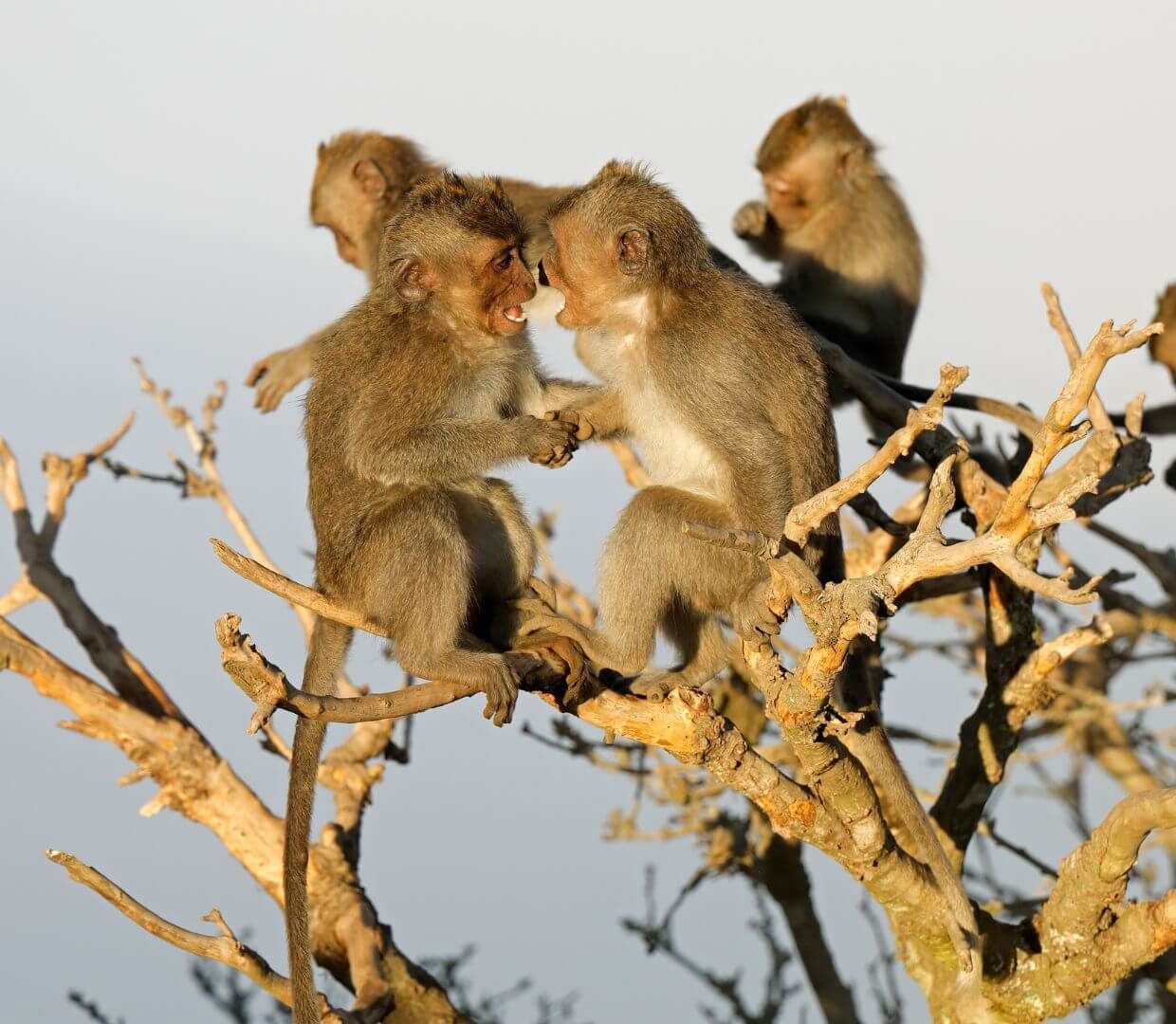Flamingos
Where Do Flamingos Live?
There are six species of flamingos that live in and near shallow water ecosystems. Four species can be found in North and South America, and two live in Africa and Asia. They live in tropical and temperate climates.
Why Are Flamingos Pink?
Flamingos are known for their beautiful pink feathers. Their pink color comes from their diet. They eat blue-green algae, small brine shrimp, aquatic insects, and other small organisms that live in shallow water. Their food, especially the blue-green algae, has a high concentration of carotenoids, an orange-red pigment. The flamingos break this pigment down as they eat and it slowly builds up in their feathers, turning them pink! Flamingos are born a white-gray color, it can take up to 3 years for them to turn completely pink.
Different parts of the world have different food available for flamingos, causing some species to be pinker than others. Species that live where there is a high concentration of blue-green algae are pinker than those that live where there is a higher concentration of shrimp/water bugs.
Are Flamingos Filter Feeders?
Flamingos are filter feeders, that's how they can eat these tiny organisms from the water. Their beaks are lined with comb-like structures called lamellae that trap food in their mouth while water escapes. When feeding, they tip their heads upside down and quickly chatter their bill.
Their necks are long enough to allow them to reach the water for feeding. They are often seen standing on one leg, which commonly raises the question - why? Scientists aren’t sure why flamingos (and other birds) stand on one leg, but theories include keeping them warm by tucking one leg under their feathers or perhaps saving energy.
Do Flamingos Live in Groups?
Flamingos are typically gregarious, which means they live in large, flexible social groups. They gather in especially large groups during the breeding season when they build their nests along the shore. Flamingo nests are piles of mud with an indent in the middle where females lay one egg.
How Do Flamingos Raise Chicks?
Flamingo pairs stick with their mate for the season and work together to raise their offspring. Unlike most other birds that collect food and bring it back to the nest for the chicks, flamingos produce a substance called “crop milk” in their throats filled with nutrients and - carotenoids! Flamingo parents often lose some pinkness while producing crop milk to feed their chick.
After several weeks, chicks gather in groups called crèches and are cared for as a group. This makes less work for each individual pair of flamingos. After about four months, the chicks are totally independent.
Are Flamingos Endangered?
Fortunately, most flamingos are not threatened with extinction. However, they do face threats such as loss of feeding and nesting sites due to the construction of dams and channels and egg collection.
Want To Learn More?
Check out EdZOOcating Adventures' Flamingo lesson with videos, quizzes, activities, projects, glossaries, and more.
Flamingo Lesson
$8 (No Expiration Date)Membership
Gain access to 70+ lessons for just $10/month or $100/year.

